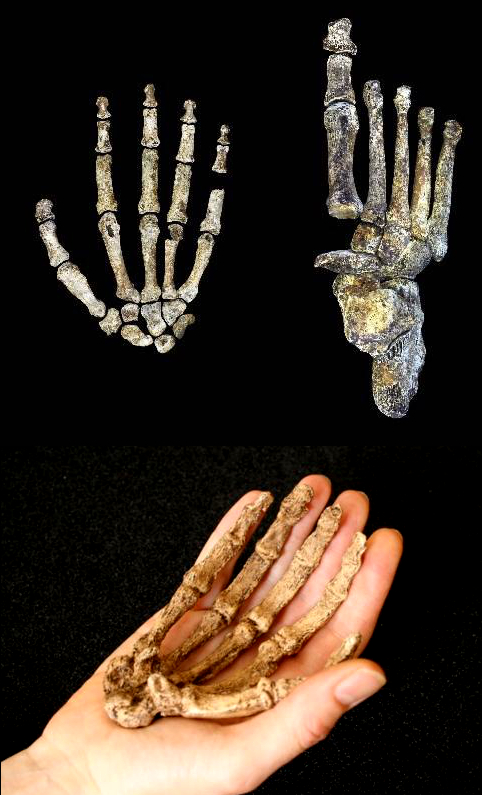Old man's bones point to ancient tree-change
 Newly-published studies on the hands and feet of our ancient ancestors suggests they were a lot like us, only they spent more time in trees.
Newly-published studies on the hands and feet of our ancient ancestors suggests they were a lot like us, only they spent more time in trees.
The reports come after the sensational revelation of a new link between modern humans and our primate predecessors – dubbed Homo naledi.
The discovery of a new human-like species - Homo naledi - in a burial chamber deep in a cave system in South Africa made international news in September, with researchers claiming the discovery will change ideas about our ancestors.
Already, the two-to-three-million-year-old species has revealed itself to be very much like modern humans.
Now, teams from a number of international institutions have had the chance to take a closer look at Homo naledi.
They have determined that naledi was an all-rounder, in primate terms, equally at home on solid ground or in trees.
It had the same curved fingers for grasping branches that even earlier ancestors have, but also a remarkably strong ability to pinch its thumb and fingers together – something typically associated with tool use previously only seen in later humans, such as Neanderthals.
Have the strength and control to pinch two fingers together is more significant than it might seem, according to Tracy Kivell from the UK’s Kent University.
“The features that we see particularly in the wrist, we've only ever found in Neanderthals and [modern humans], and we know that those are committed to using tools,” she told BBC reporters.
“They make tools, complex tools, and use them all the time, enough so that it's actually changed their morphology.
“Perhaps naledi was using tools that were made out of different materials or doing some other forceful, precision-grip manipulations, but the most straight-forward explanation is that naledi is making and using tools.”
The possible use of tools is complicated by the fact that no evidence of tools was found at the Rising Star Cave in the Cradle of Humankind World Heritage Site outside Johannesburg, the only known naledi site.
Among the hundreds of Homo naledi bones uncovered in the cave were 107 confirmed foot-bones, including one particularly well-preserved right adult foot.
Just like the hands, Homo naledi’s feet are very modern human-like in their shape, and in their inferred function.
The experts say naledi was perfectly comfortable walking upright on two feet.
“This was an animal that was bipedal; it was very comfortable on the ground,” said William Harcourt-Smith, from Lehman College CUNY and the American Museum of Natural History.
“You can imagine that during the day, when it was out and about, it was mostly on the ground. But for things like going to feed or to hide from predators, it would have gone into the trees, because we see that it has retained some of these more primitive features in the foot. So - much more bi-pedal than not, but not 100 per cent.”
Researchers say they have not been able to give the naledi bones a definitive age, as high-tech dating has yet to be undertaken.
They have put a rough estimate on its age of about two million years, though there is some conjecture that it could be more closely related to the Indonesian species Homo floresiensis, which has some very primitive traits but is known to have been living perhaps as recently as 12,000 years ago.
If Homo naledi is that young, “then you have a remnant lineage in South Africa, alongside other species that are much more advanced, hanging on and doing well quite late into the record,” Dr Harcourt-Smith said.
“That would speak to diversity and experimentation in the Homo genus.
“And then if naledi really is very old, it's fascinating too because it's something in South Africa rather than East Africa that is very distinct, and again points to a lot of experimentation in the emergence of Homo.
“So it's win-win whatever the dating shows.”
The research on the hands, and feet, have been published in journal Nature Communications.







 Print
Print